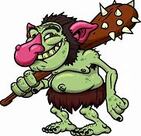Sure, there will be adults and some older children who are more comfortable singing in a low alto range. But it is really unfair to insist that young children try to sing out of their natural singing range. Besides that --- and how many times must I rant from my soap box? --- unless children exercise singing in their light, high voices, THEY WON'T LEARN TO MATCH PITCHES very well!
Do you (as a song leader who is responsible for teaching young children) want to have that reality hang over your head? Just because you get some flack from some of the teachers and other adults complaining that the music in Primary is just too high, should you cave? No! A thousand times NO!!!!!
Little children (4-9) need to utilize their "head voice" apparatus. When the vocalization happens in their head and not in their throat or chest, the vibrations activate recognition between their ears and their brains. They learn to MATCH PITCHES. Most music educators agree that a child's first singing range is about 1 octave between Middle C and Treble C with a possible whole step beyond in either direction.
Unfortunately, too many children miss out on this learning opportunity. They don't get it at home. And rarely do they have singing instruction at school anymore. So, if they enjoy singing, where do they get their examples? All they do is listen and sing along with adult performers on the television or recordings. That can be very confusing. Some men have extremely high or very low voices that are completely out of the child's pitch matching capabilities. And many professional women have low voices or sing in a very expansive range. It is not unusual for a professional female vocalist to sing from low F (5th below Middle C) to high G (5th above Treble C) or higher. That is a span of more than 3 octaves!
Buck the trend! Be the teacher that helps kids learn to MATCH PITCHES!!!







 RSS Feed
RSS Feed